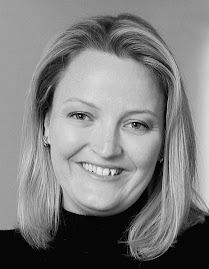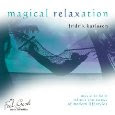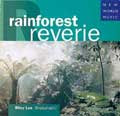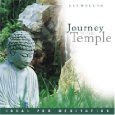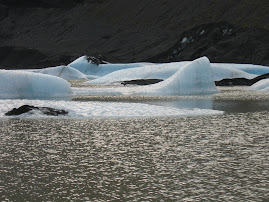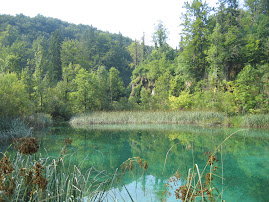Its always nice to get feedback about your blogs (hoorah, it means that someone's reading this stuff!. Tiffany, an experienced massage therapist saw my post about Ayurvedic massage in Bratislava and left a comment about her blog, Personal Alchemy.
I had a quick peek, and it looks like a really informative blog about Ayurveda. The most recent post discusses exercise for your dosha, and has a cool quiz to help you determine which is your dominant dosha. Mine is Pitta, which is about the process of transformation.
Hmm. I'll have to investigate this further.
Wednesday, April 23, 2008
A cool blog about Ayurveda
Monday, April 21, 2008
More on ayurveda
I had a nice response overnight from my post on ayurvedic massage in Bratislava on my Surplice of Adventure travel blog, from a Dr. Prerak Shah who runs an ayurvedic centre in Ahmedabad, India. His impressive CV indicates he's rather an international expert on ayurveda - thanks for stopping by my wee little blog!
His site, Ayulink.com provides a stack on information about ayurveda, and it looks as though his centre runs courses for massage therapists and other complementary therapists. That's got me thinking about a trip to India...:-)
What's your dominant Chakra?
Chakras are the body's energy centres. Traditionally there are seven, as depicted by the picture below.
Each chakra is associated with a particular region of the body - in my anatomy and physiology lectures, it was suggested that chakras corresponded with the body's endocrine system. This idea is also referenced in many text books, and was something my teachers in the College of Psychic Studies Accredited Healing Course also discussed.

Reiki practitioners, energetic healers and other holistic therapists use chakras as "listening points" when working with clients, and can determine by the way the energy centre feels, if anything it is out of balance. This guides the therapist as to where to focus the healing.
According to Wikipedia, the main concepts related to each chakra are:
Sahasrara or the crown chakra is generally considered to be the chakra of consciousness. Its role may be envisioned somewhat similarly to that of the pituitary gland, which secretes hormones to communicate to the rest of the endocrine system and also connects to the central nervous system via the hypothalamus. The thalamus is thought to have a key role in the physical basis of consciousness. Symbolised by a lotus with nine hundred seventy-two petals, it is located above the head outside the body.
Ajna (along with Bindu, either or both are considered to correspond to the third eye) is linked to the pineal gland which may inform a model of its envisioning. Ajna is held as the chakra of time, awareness and of light. The pineal gland is a light sensitive gland that produces the hormone melatonin which regulates sleep and awakening. Symbolised by a lotus with two petals.
Vishuddha (also Vishuddhi) or the throat chakra may be envisioned as relating to communication and growth, growth being a form of expression. This chakra is paralleled to the thyroid, a gland that is also in the throat and which produces thyroid hormone, responsible for growth and maturation. Symbolised by a lotus with sixteen petals.
Anahata or the heart chakra is related to complex emotion, compassion, love, equilibrium and well-being. It is related to the thymus, located in the chest. The thymus is an element of the immune system as well as being part of the endocrine system. It produces T cells responsible for fending off disease and may be adversely affected by stress. Symbolised by a lotus with twelve petals.
Manipura or the solar plexus chakra is related to the transition from simple or base to complex emotion, energy, assimilation and digestion, and is held to correspond to the roles played by the pancreas and the outer adrenal glands, the adrenal cortex. These play a valuable role in digestion, the conversion of food matter into energy for the body. Symbolised by a lotus with ten petals.
Swadhisthana or the sacral chakra is located in the sacrum (hence the name) and is related to base emotion, sexuality and creativity. This chakra is considered to correspond to the testicles or the ovaries that produce the various sex hormones involved in the reproductive cycle which may cause dramatic mood swings. Symbolised by a lotus with six petals.
Muladhara or the base or root chakra is related to instinct, security, survival and also to basic human potentiality. This centre is located in the region between the genitals and the anus. Although no endocrine organ is placed here, it is said to relate to the inner adrenal glands, the adrenal medulla, responsible for the fight and flight response when survival is under threat. In this region is located a muscle that controls ejaculation in the sexual act in the human male. A parallel is charted between the sperm cell and the ovum where the genetic code lies coiled and the kundalini. Symbolised by a lotus with four petals.
Facebook has a nifty quiz that helps you to assess what your dominant chakra is - it's quick and easy to take, and like any of this stuff, you may or may not agree with the results. Apparently, mine is Anja. Here's what it had to say about the having a dominant Third Eye Chakra:
"Your dominant Chakra flows from between the eyes. You are a perceptive and intuitive individual. People whose dominant Chakra is Vishuddha are talented in the respect that their senses are more sensitive and acute than most other peoples'. They tend to see and hear things that others don't, and are gifted with vivid dreams. Ajna Chakra is associated with Aether (Energy), rather than a particular element."
Sooo....do I believe this? I guess with one of seven potential outcomes, the explanations are going to be pretty generalised - but when I got this result, it resonated with me. I do indeed have vivid dreams - not often, but certainly vivid; and I do tend to be able to see the big picture (who needs details!!).
It's a cool quiz. Check it out - and if you feel out of sorts, perhaps consider having your chakras rebalanced via Reiki or energetic healing.
Tuesday, April 15, 2008
How it feels to have a stroke - right brain, left brain and all that energy
I was recently forwarded a link to a You Tube video called How it Feels to Have a Stroke. I wasn't quite sure what to expect, but I sat through the 20-minutes of Neuroanatomist Jill Bolte Taylor discussing her experience of having a massive stroke.
She discussed the functions of the right and left hemispheres of the brain, and the physiological effects of the stroke on each of those hemispheres. She also discussed the effects of the stroke in terms of herself as an energetic being connected to the univeral energy force, which perhaps was the most interesting part for me.
Check it out - as well as giving a unique insight into the workings of the brain during a major trauma - and the signs/symptoms of a stroke, it's also an amazing observation about energy and the potential for us all to choose in every moment how we want to live.
Monday, April 14, 2008
Ayurvedic massage in Bratislava's Old Town
With my relocation to Australia looming, I took the opportunity to have one last quick weekend in Europe.
I chose to go to Bratislava, Slovakia's capital, simply because I hadn't been there, and had read that it's Old Town was picturesque.
True to it's word, it was indeed quaint and pretty. It was also fairly small, so by the end of my second day I thought I'd just about discovered as many new things in the old town as I was likely to. By chance, however, I took a different route through the cobbled streets back to my hotel, and stumbled across a large sign that said Ayurvedic Massage Centre.
Ayurvedic massage is something I'd read about, but had not yet tried. All I knew was that it originated in India and was more than just massage - it was an entire way of life that included massage, healthy eating and fitness.
So in I went, curious to find out more about how this Ayervedic Massage Centre called Darsana had found its way into Bratislava's Old Town.
The owner, Mark, was helpful and happy to explain how he'd come to set up the centre. He said he saw an opportunity to bring a different form of massage to Slovakia. Having looked around the city myself, I'd only seen Thai massage advertised. So - competition seemed pretty limited and he felt that with the increasing standard of living in Bratislava, people would be ready to pay for more exotic forms of pampering.
He explained that he'd been to India some ten years ago and liked the ayurvedic style, and had in fact, just returned from India earlier in the week. He had brought in massage therapists from the Indian state of Kerala, where ayurveda originated.
The centre itself was lovely - granite floor everywhere, neutral tones, and dimly lit. He explained that the building was originally from the 14th Century, and he'd had a hard time doing the re-fit because there were so many heritage-related regulations. He'd done a fantastic job though - it was calm, quiet and felt like a million miles away from the narrow little streets of Bratislava.
He was kind enough to show me around the therapy rooms, explaining that the wooden massage tables were authentic ayurveda style. They looked enormous, and had a two-step wooden box for the therapists to stand on while they were massaging.
Mark explained that Abhyangam is a popular ayurvedic massage that focuses on the body's seven different energy centres - called marma. I gathered that these must have been synonymous with chakras, which I was familar with, but will have to investigate further.
He then unveiled a curtain to reveal another treatment room. It looked like a huge metal pressure cooker, which he explained, pumped out steam infused with herbal oils. Called Swedanam, it was like a mini-sauna for one. He demonstrated how the client would sit on the chair, with their head poking through a hole in the top of the box, and showed where the steam was pumped out. I had visions of claustrophobia or getting stuck in there, but he assured me it was a common procedure in India and ayurvedic therapy.
Having now heard quite a bit about ayurvedic massage, I decided I needed to try it, and booked in the following day for a 45 minute Abhyangam massage, a 20 minute Shiro abhyangam (or Indian head massage), a 20-minute facial massage and a 15 minute session in the pressure cooker.
When I arrived the next day, I was shown into the change room and then into one of the therapy rooms. And so began the full body massage.
The massage therapist used a lot more oil in this form of massage than what I was used to in Swedish massage. And the focus seemed to be far more on long flowing strokes up and down the body rather than pressure work in specific areas.
The oils were scented - infused with herbs, the therapist explained, and they sought to work on re-balancing the three energies known as Doshas – Vatha, Pitta and Kapha. Vatha governs the principle of movement, the Pitta dosha is the process of transformation and Kapha is responsible for growth and adding structure.
In any case, I felt that my Dosha's were getting the right royal treatment as I pondered how amazing it is that there are so many forms of massage, all originating from different parts of the world, yet all so beneficial to one's wellbeing.
By the time I was flipped over, I felt oiler than a McDonald's french fry, but I knew that the oils and herbs were doing wonderful things to relax my body and mind.
Onto the facial, and the therapist used the most delicate strokes around my face. It felt as light as rain drops, but was incredibly relaxing. I could have snored half way through, or perhaps I was just dreaming that I did. It was drool-worthy, in any case. Then it was time to slide off the table (and I mean SLIDE), into a chair for the head massage. Indian Head Massage - which I had tried before - is typically done on a seated client. You can elect to have it with oil or without. I went with the oil version, and the therapist began a series of rather more vigourous strokes around my head, layering in oil to the point where my hair was a mega greaseball.
Indian Head Massage - which I had tried before - is typically done on a seated client. You can elect to have it with oil or without. I went with the oil version, and the therapist began a series of rather more vigourous strokes around my head, layering in oil to the point where my hair was a mega greaseball.
Look at pretty much any Indian's hair and you'll see its typically shiny and strong - head massage is apparently a really important part of their lives. Massage of the scalp promotes hair growth and hair quality, and can help to reduce tension in the scalp, neck and shoulders.
Twenty minutes of head massage passed dreamily by and I was then shown into the pressure cooker room for my 15-minutes of Swedanam steamin'. The therapist explained that the temperature in the pressure cooker would increase, and that I could stay in there for up to 15 minutes.
She stayed in the room for pretty much the whole time, checking in on the temperature, and basically making sure I didn't faint. I felt fine, but I could see how some people may be prone to fainting in that environment. The oils simmered away - heat and steam helping my skin to absorb the oils and further promote relaxation. It was lovely! 15 minutes was about enough.
I was then led into the chillout room. I really like clinics and salons that provide a chill room. It can be fairly daunting leaving a relaxing massage and heading straight back out into the busy world. This one was warm and comfy and I was given tea and a huge fluffy blanket to sit under for a while. This process helped the oils to absorb even more.
Another client was sitting there, alo chilling out. She looked suitably happy and relaxed. We discussed our treatments and how wonderful they were, and also our surprise at finding this ayurvedica centre in Bratislava of all places!
When I left Darsana more than two hours after I'd arrived, I felt very relaxed and clear-headed. My niggling lower back ache was gone and I was smiling. Massage definitely switches on the smiley button for me.
I walked out into the warm Slovakian sun and had a light lunch in the bustling courtyard just under Michael's Gate.
It was a perfect way to spend my last morning in Bratislava. The combined cost of the four treatments equated to about £60.
Wednesday, April 9, 2008
Relaxing through meditation
According to a recent BBC documentary about meditation, some 10 million people in the Western world practice meditation.
The word meditation seems to mean many different things to different people. Some people associate it with prayer, others with breathing and relaxation, and yet others see it as something you do at the end of a yoga session.
SO...what is this thing called meditation?
The dictionary defines it in a number of ways:
1: to engage in contemplation or reflection
2: to engage in mental exercise (as concentration on one's breathing or repetition of a mantra) for the purpose of reaching a heightened level of spiritual awareness
3: to focus one's thoughts on : reflect on or ponder over
4: to plan or project in the mind : intend, purpose
It is also a key discipline in Buddhism – although that does not in itself, make it a religious act. According to The Friends of the Western Buddhist Order, meditation “is a means of transforming the mind. Buddhist meditation practices are techniques that encourage and develop concentration, clarity, and emotional positivity.”
To me, meditation is about quietening the mind and finding a peaceful place within myself (in amongst the to-do lists).
Sounds good huh! So why do some people find it difficult to do?
In my experience in “learning” how to meditate, the prospect of sitting by myself in quiet contemplation, being aware of my breathing and/or reciting a mantra, and attempting to let all thoughts pass through my mind without judgement, seemed ridiculously hard! My mind never seems to stop, so the idea of being still for even just 10 minutes a day - outside of sleep – was a foreign concept.
Over the years, I’ve tried meditation tapes, books and courses – and it certainly helped to be able to discuss the practice of meditation with other people in the same boat as me....ie clueless!
I eventually stumbled across guided meditations or visualisations, whereby a voice guides you into a safe, peaceful scene that’s intended to induce a deeply relaxed state – a state similar to what you might achieve by sitting still and be aware of your breathing. Low and behold, you’re meditating! My favourite guided meditations include:
My favourite guided meditations include:
- The Celestine Meditations, by Salle Merrill-Redfield (wife of The Celestine Prophesy’s author, James Redfield. There are two 25-minute sessions on this CD; the first does a guided walk through a growth forest, and the second, along a peaceful beach. - Morning and Evening Meditations by Louise L. Hay, that focus on being thankful for what you have, and starting and ending your day peacefully.
- Morning and Evening Meditations by Louise L. Hay, that focus on being thankful for what you have, and starting and ending your day peacefully.
- Chakra Clearing: A Morning and Evening Meditation to Awaken Your Spiritual Power by Doreen Virtue, which help you to become aware of your body’s energy centres and the issues associated with each chakra. - There’s also a stack of free tracks available on iTunes under Podcasts.
- There’s also a stack of free tracks available on iTunes under Podcasts.
Recordings like this can be great for beginners, or if you’re trying to maintain a meditation practice alone. I found that the more I listened to guided visualisations, the more I started to crave silence, rather than someone else’s voice. So I then started to explore the more traditional Buddhist techniques of mindful meditation.
To do this, I recently attended a weekend meditation retreat at the Rivendell Buddhist Retreat Centre, run by The Friends of the Western Buddhist Order. This introductory retreat gave a great overview of the concepts of mindful meditation, alternative sitting postures (that also help energy flow through the body), and general benefits of meditation. It was also really nice to meditate amongst other people. Almost everyone commented that it somehow felt more powerful to be quietly contemplating in a room with 20 other people.
The BBC documentary also spoke of the benefits of meditation, which amongst other things, included calmness, stress reduction, improvements in happiness and wellbeing, improved concentration and focus, mental alertness, and potential reductions in blood pressure in people with high blood pressure!
While I still struggle with meditating daily, or even every other day – I certainly find that when I do it, I feel very relaxed afterwards, sleep better, and generally feel calmer and happier.
In today’s frantic world, I reckon it’s worth taking whatever steps you can to induce a state of relaxation.
Do you meditate? Do you want to meditate but struggle? I’d love to hear your thoughts.
Thursday, April 3, 2008
More is better: you can't overdose on massage!
MassageTherapy.com is running an interesting article about the benefits of massage. The article outlines some studies by the University of Miami's Touch Research Institute (TRI), that consistently reinforce the huge benefits of caring touch to infants.
It also describes the growing adoption of massage by the medical community, both with post-surgery patients and terminally ill patients.
It highlights the ability of massage to reduce stress and promote relaxation, and concludes with the obvious fact - it leaves people feeling great!
My favourite quote is from Dr. Maria Hernandez-Reif, one of the lead researchers at TRI who, along with colleague Tiffany Field, has been proving the efficacy of massage for years. She says that "massage is not a "drug" on which you can overdose."
I couldn't agree more!
